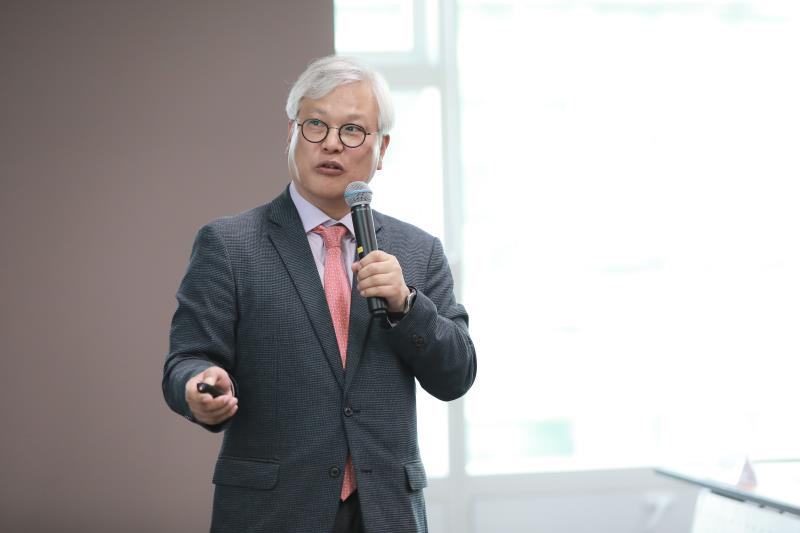
【High-level Interview】Lee Hee Ok: China Should Further Explore New Development Models with B&R Initiative Countries
China can build and disseminate certain international discourse conforming to the spirit of open times. However, it cannot stop at simply being a “discourse”.
In 2013, Chinese President Xi Jinping proposed the concepts of “Silk Road Economic Belt” and “21st-Century Maritime Silk Road”. These two terms are now referred to as the Belt and Road Initiative(BRI).
With the theme of Belt and Road construction, China Focus is set to launch a series of high-profile overseas interviews. Today we have an exclusive interview with Professor Lee Hee Ok, Director of the Institute of China Studies, Sungkyunkwan University.
Interviewee: Professor Lee Hee Ok, Director of the Institute of China Studies, Sungkyunkwan University.
Interviewer: Xue Li, Senior Fellow, Institute of World Economics and Politics, Chinese Academy of Social Sciences.
Date: February 19, 2019.
Place: Institute of China Studies, Sungkyunkwan University.
China Focus: In your opinion, what is the reason China put forward the Belt and Road Initiative?
Lee Hee Ok: From the Republic of Korea’s (ROK) point of view, the Chinese government is looking for a new foreign policy. In the past, China mainly complied with and adapted to the international order dominated by the United States. But now it has begun to strive to promote globalization and build a new type of international relations.
In addition, China recognized that the scope and extension of its economy should be expanded, which means that the periphery is the bridgehead that it wants to ensure. China does not seek hegemony and aims at the democratization of international relations. The Belt and Road Initiative is China’s “long-term plan” in this prolonged exploration of new international relations and global economic order.

China Focus: How do you evaluate the Belt and Road Initiative?
Lee Hee Ok: It is a good sign that China has taken a more open stance in dealing with the international economic order. From the perspective of the ROK, China’s economy used to be relatively closed. But the Belt and Road Initiative is more multilateral, open and mutually beneficial. The main goal of this initiative is China’s surrounding areas, most of which are developing countries with comparatively backward economies. China does not force them to develop under a Chinese model; instead it allows them to reap dividends or benefits from the initiative, which is widely accepted in those countries.
But the Belt and Road Initiative still needs some attractive pilotage projects, as the current blueprint is neither visible nor palpable, failing to arouse a sense of reality among people.
China Focus: Do you think China’s foreign policy has changed since the Belt and Road Initiative was put forward?
Lee Hee Ok: China’s foreign policy has indeed changed. First of all, it attaches greater importance to peripheral diplomacy. In this process China and neighboring countries can form common interests and achieve win-win effects. China has put forward a new type of international relations different from the U.S. unilateralism, that is, China’s diplomacy emphasizes two-way interaction.
China Focus: What do you think has changed in China’s national image since the Belt and Road Initiative was put forward?
Lee Hee Ok: Now China is more open and international in diplomacy. As its economy continues to expand, China needs to improve its relations with other countries continuously.

China Focus: President Xi Jinping has called the Belt and Road Initiative the “Project of the Century”, which means that the construction of the initiative will be a long-term process. In your opinion, what are the sustainability problems during the construction of the initiative? How should they be solved?
Lee Hee Ok: From a historical point of view, the Silk Road boasts a very long history and still has its value even in the 21st century. Now China aims at opening-up, cooperation and common governance. Based on the past, the planning of the ancient Silk Road has been modified.
China should further improve its way of cooperation with Belt and Road Initiative countries to seek new development models, including new contents, new forms and so on. For example, China is now moving rapidly in 5G technology, big data, artificial intelligence, etc., which the ROK also believes will be the main development orientation for some time to come. China can take advantage of such strengths and carry out a leap-forward cooperation with neighboring developing countries, that is, break traditional cooperation and explore new fields or forms of cooperation. Estonia, for instance, used to introduce advanced technology as a national strategy to achieve its leap-forward growth. And now the Democratic People’s Republic of Korea is also very concerned about the possibility of leap-forward economic growth.

China can build and disseminate certain international discourse conforming to the spirit of open times. However, it cannot stop at simply being a “discourse,” it should be made an attractive, propagative and influential international discourse with a high degree of acceptance. That is actually a good opportunity for China.
 Facebook
Facebook
 Twitter
Twitter
 Linkedin
Linkedin
 Google +
Google +











